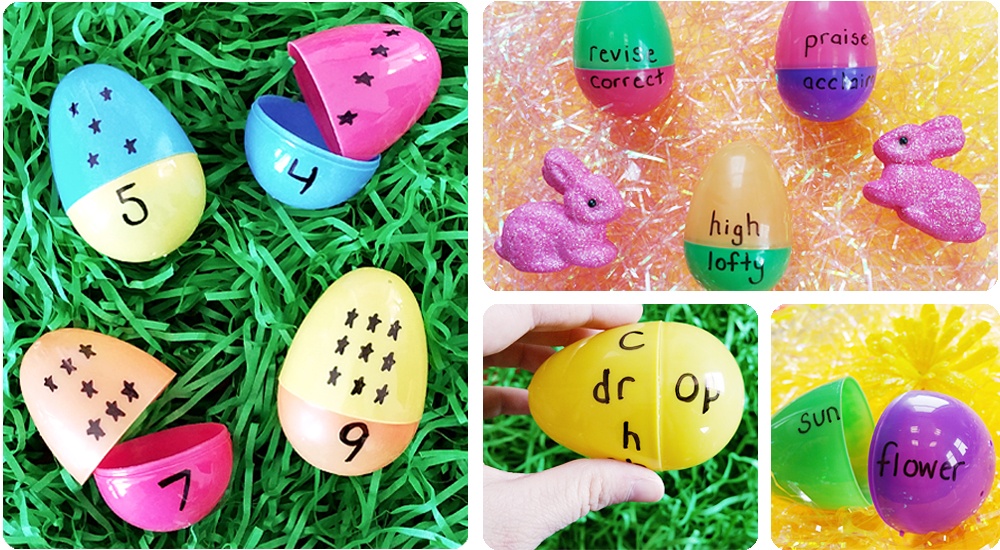

Making Compound Words
Take one half of a plastic Easter egg and write the first part of a compound word on it (such as "jelly"). Take the other half of the plastic egg and write the second part of that compound word on it (such as "bean"). Mix up the egg halves and have your students put together the correct combinations of compound words ("jellybean").

Making Word Families
On the taller side of a plastic egg, write a common word family ending (ex: -ad, -en, -ing, -ow, -ug) On the shorter side of the egg, write a beginning consonant or blend. Have your students take one egg at a time, read the word that is formed by the two halves combined, and then twist the egg to continue to read each new rhyming word that is formed in the word family.

Identifying Synonyms and Antonyms
Write a variety of synonyms on plastic egg halves and have your students match up the correct synonymous words. You can do the same with antonyms.

Counting Stars
On one half of a plastic egg, draw a particular number of stars. On the other half, write the number represented by the stars. Mix up the egg halves and have your students match the stars with the correct number.

Practicing Addition and Subtraction
Give your students a fun way to practice their addition and subtraction skills. Write a problem on one half of a plastic egg and an answer on the other half. Mix up the egg halves and have your students match the problem with the correct answer.

Practicing Multiplication and Division
You can also do the above activity using multiplication and division problems. Of course, the difficulty of the math problems you use can be modified to suit your grade level and and curriculum needs.